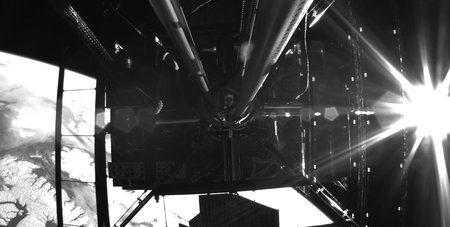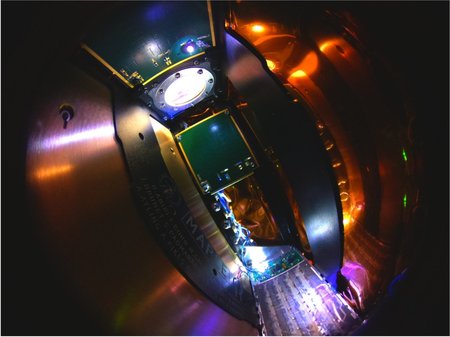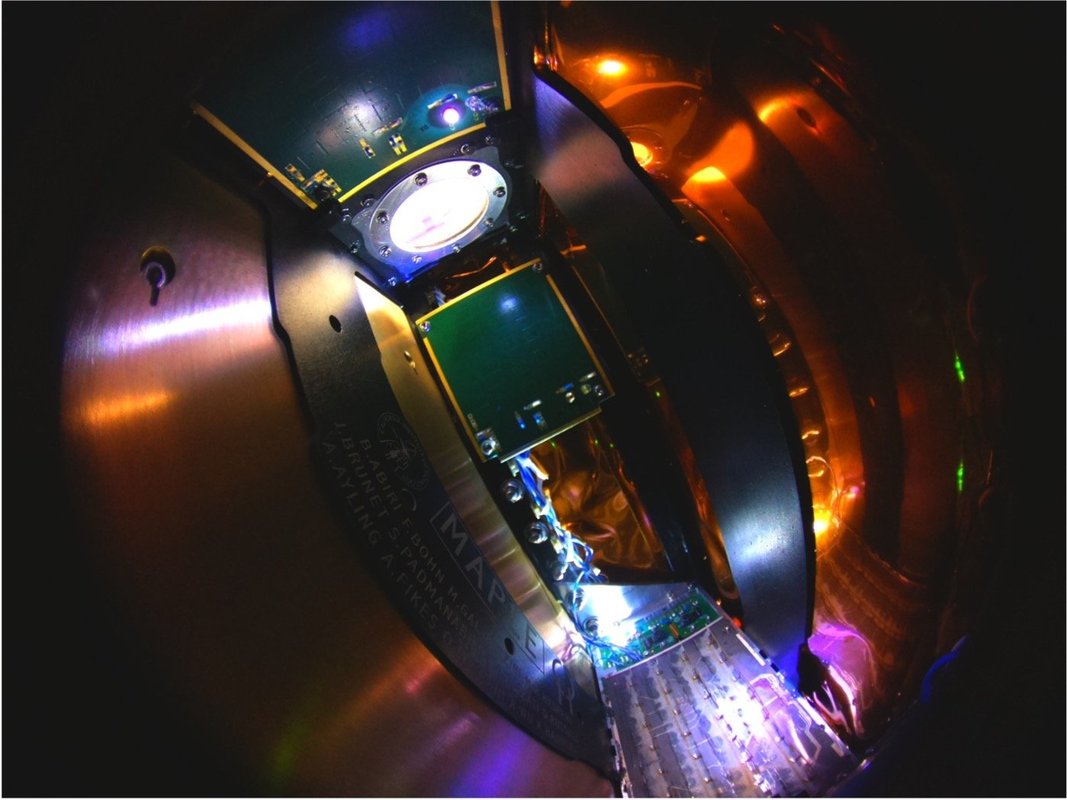One year ago, Caltech's Space Solar Power Demonstrator (SSPD-1) launched into space to demonstrate and test three technological innovations that are among those necessary to make space solar power a reality.
The spaceborne testbed demonstrated the ability to beam power wirelessly in space; it measured the efficiency, durability, and function of a variety of different types of solar cells in space; and gave a real-world trial of the design of a lightweight deployable structure to deliver and hold the aforementioned solar cells and power transmitters.
Now, with SSPD-1's mission in space concluded, engineers on Earth are celebrating the testbed's successes and learning important lessons that will help chart the future of space solar power. [Caltech story]

 A view from inside MAPLE, which will demonstrate wireless power transmission in space. This angle shows both the array of flexible, lightweight microwave power transmitters (right side), and the two receivers that they will transmit power to (left side). The top receiver is receiving power in this picture, and it is lit by this wirelessly transmitted power.
A view from inside MAPLE, which will demonstrate wireless power transmission in space. This angle shows both the array of flexible, lightweight microwave power transmitters (right side), and the two receivers that they will transmit power to (left side). The top receiver is receiving power in this picture, and it is lit by this wirelessly transmitted power.


